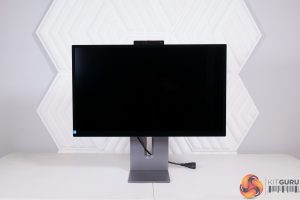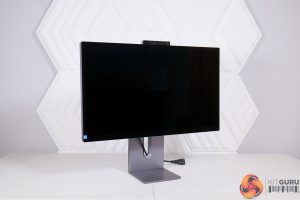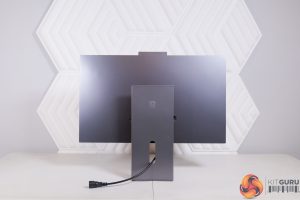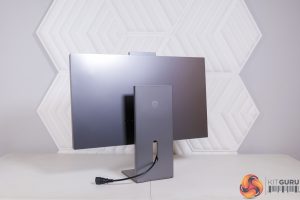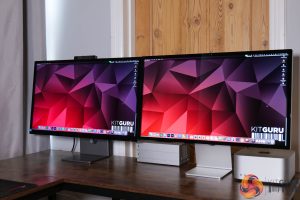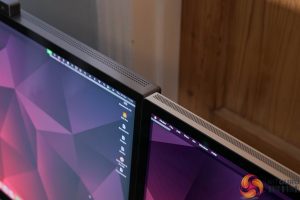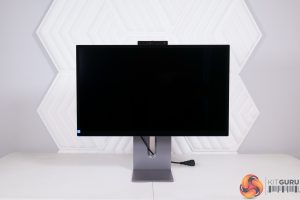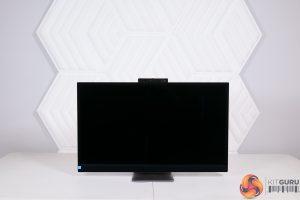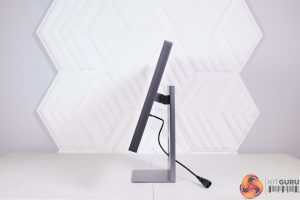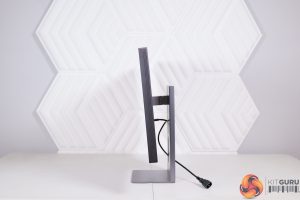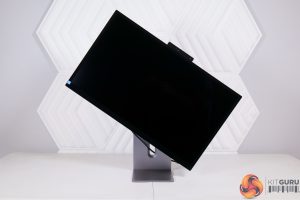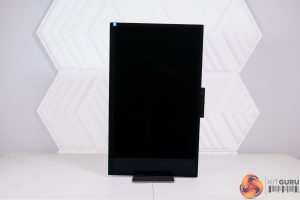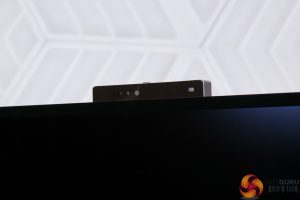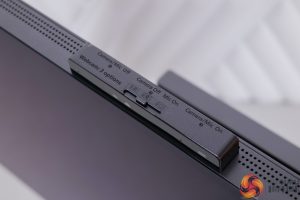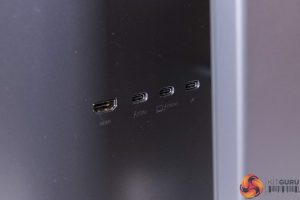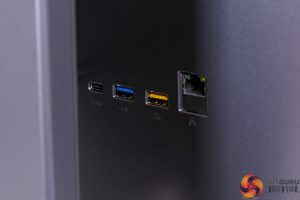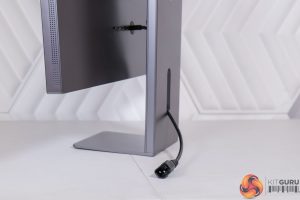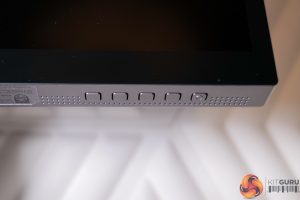Kicking off with the design of the Philips Brilliance 27E3U7903, it is immediately reminiscent of the Apple Studio Display with its L-shaped stand and clean bezel-less design. Unlike the Studio Display, however, it's a mostly plastic construction which does feel incongruous at this price-point – it still costs the best part of a grand, after all, so I really would have expected to see a full-metal stand and perhaps some metal sections on the rear. The square base of the stand is made from metal, but the rest is plastic, and that is disappointing.
It's more of a ‘Space Grey' colour than Apple's silver approach for the Studio Display, and you can see the two screens side by side here – Philips' inspiration for the design even extends to the round perforations in the top and sides of the chassis. Imitation is the greatest form of flattery, as they say.
One area where Philips does have an advantage over the Studio Display is with the included stand. Apple's own is limited to just a tilt mechanism, unless you shell out another £400 for the height-adjustable option. With the 27E3U7903, you get up to 150mm height adjust, tilt from -5 to +20 degrees and full 90 degree pivot functionality. There is swivel, too, thanks to a rotating disc built into the foot of the stand, though that means the whole monitor swivels, rather than just the panel as we typically see.
At the top we find the built-in 5MP webcam and a three-stage toggle to allow you to manually enable or disable both the camera and microphones. I presume this is also where Philips has included the sensor for the PowerSensor (AKA proximity sensor) feature which we discuss on the next page.
As for the connectivity options, there's one full-size HDMI 2.1 connector, one USB-C that supports DP-Alt mode and 15W power delivery, and one Type-C Thunderbolt 4 port which provides both video, data upstream and 96W power delivery. Then there's one more Type-C which is data upstream only plus 15W PD, one Type-C downstream that also offers 15W power, alongside two Type-A downstreams, with the yellow one providing fast charging support. Finally we also find a full-size Ethernet port.
It's overall a solid selection, though as I pointed out in my ASUS ProArt PA32UCDM, I do find the lack of a full-size DisplayPort connector a strange move. I completely get it's geared more towards Mac users or people connecting via USB-C to a laptop, but if you are a desktop PC user looking to connect from a graphics card, then you've only got the HDMI 2.1 port as an option.
It's also worth noting that the power connection is non-removable – instead, a short kettle lead snakes out from the back of the monitor, effectively acting as an extension, and you plug into that. I guess Philips is thinking that it keeps the back of the monitor a bit cleaner without the bulky C13 connector going straight into the rear of the panel – either that or it allows the chassis to stay a little slimmer. It's not a big deal either way, just something to be aware of.
Lastly, Philips provides five buttons to navigate the OSD, positioned on the underside of the monitor chassis. Regular readers will know I am not a fan of these buttons and would much prefer a joystick – at the very least give us both options please, Philips!
 KitGuru KitGuru.net – Tech News | Hardware News | Hardware Reviews | IOS | Mobile | Gaming | Graphics Cards
KitGuru KitGuru.net – Tech News | Hardware News | Hardware Reviews | IOS | Mobile | Gaming | Graphics Cards


